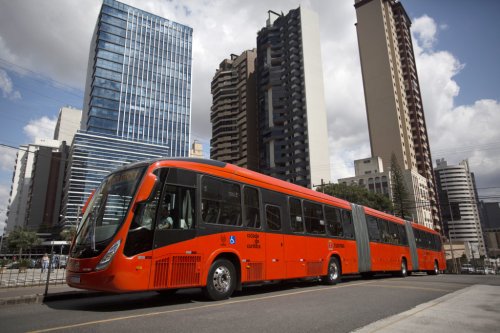Volvo Buses has supplied 40 new buses to the city of Curitiba’s transportation system. Since the beginning of the year, Volvo has delivered 6 bi-articulated, 13 articulated and 21 rigid buses to the city.
“We are back to having a leading position in bi-articulated buses in the city and in the market. In addition, we have significant deliveries in the entire HD vehicle segment, which also includes articulated and conventional buses,” said Fabiano Todeschini, President of Volvo Buses Latin America. Curitiba’s BRT buses travel in exclusive lanes or corridors, with the bus floor at the same level as the bus stop platform to aid boarding, and pre-paid fares to promote a faster and more fluid passenger transportation experience. Developed in the city in the 1970s, the system is said to have served as an inspiration for a number of other metropolitan areas around the world, in particular in Latin America.

At the start of the last decade, numerous factors conspired to constrain fleet renewals, and this trend has now been reversed: “As partners since the beginning of BRT, we are very pleased that the city is once again starting to invest in new buses, keeping the focus on safety and quality,” explained Paulo Arabian, Bus Commercial Director for Volvo in Brazil.
Curitiba’s mass transit system carries around 1.23 million passengers on more than 14,100 trips a day over 254 routes, and the city’s 1250 buses cover around 273,000 kilometres. Curitiba’s new Volvos are of B340M bi-articulated, articulated and conventional models, with a heavy-duty specification including electronic disc brakes and ABS, electronic acceleration control and an automatic air suspension levelling system, among other features.
“We are very proud to have created the world’s first commercially viable bi-articulated bus, helping in the consolidation of BRT first in Curitiba and later in other metropolitan areas,” said Fabiano. The buses are also prepared for installation of Automatic Speed Control, a system that uses GPS connectivity to automatically limit bus speed in critical areas such as terminals or near schools and hospitals. In 2018 when this new technology was implemented, a significant contribution to road safety was reported, with a reduction in the number of collisions by 50% on the north axis of the BRT network in the capital of Paraná compared with the preceding year.

